- Choose the Right Spot for Planting
- Prepare the Soil Properly
- 1. Test the soil
- 2. Till the soil
- 3. Add organic matter
- 4. Provide proper drainage
- 5. Adjust soil nutrients
- 6. Mulch the soil
- Select the Right Watermelon Variety
- Plant Watermelon Seeds at the Right Time
- Watermelon Planting Tips for Proper Watering
- Prune the Watermelon Plants for Better Growth
- 1. Remove the Suckers
- 2. Trim the Leaves
- 3. Prune the Lateral Vines
- 4. Support the Growing Fruits
- 5. Time Your Pruning
- Protect Your Watermelon Plants from Pests and Diseases
- 1. Aphids
- 2. Spider Mites
- 3. Fusarium Wilt
- 4. Powdery Mildew
- 5. Squash Vine Borers
- 6. Crop Rotation
- 7. Regular Inspections
- Harvesting and Preserving Watermelons
- 1. Determine the Ripeness
- 2. Harvesting the Watermelon
- 3. Storing and Preserving
- “Question-Answer”
- When is the best time to plant watermelons?
- Can watermelon plants tolerate drought?
- How often should I water my watermelon plants?
- Should I water the leaves of watermelon plants?
- How can I prevent my watermelon plants from drying up?
- What nutrients do watermelon plants need?
- Can I grow watermelon plants in containers?
- “Video” The method of growing watermelon the whole world does not know, the fruit is too big and sweet
Growing watermelon can be a satisfying and rewarding experience for any gardener. The sweet taste of a juicy watermelon picked fresh from your own garden is hard to beat. However, there is one common mistake that can lead to disappointment and frustration: not providing enough water.
Watermelons are made up of about 90% water, so it’s no surprise that they require a lot of moisture to thrive. One of the biggest mistakes people make is not watering their watermelon plants enough, especially during dry spells or hot summer months.
To ensure healthy and robust plants, it is crucial to keep the soil consistently moist. This doesn’t mean you should drown the plants with excessive watering, but rather provide them with a deep watering once or twice a week, depending on the weather conditions.
Another crucial aspect of watering watermelon plants is to water them at the base, rather than from above. This helps to prevent the leaves and fruits from getting wet, which can increase the risk of diseases and fungal infections. Soaker hoses or drip irrigation systems are ideal for delivering water directly to the roots while minimizing the amount of water that comes into contact with the plant itself.
Tip: It’s also important to mulch around the watermelon plants to help retain soil moisture and prevent weeds from competing for water and nutrients.
In conclusion, if you want to prevent your watermelon bushes from drying up, the secret lies in providing them with adequate water. Keep the soil consistently moist, water at the base of the plants, and mulch to retain moisture. By following these simple watering techniques, you’ll be on your way to a bountiful harvest of juicy, delicious watermelons.
Choose the Right Spot for Planting
When it comes to planting watermelons, choosing the right spot in your garden is crucial for their growth and productivity. Here are some factors to consider when selecting a location:
- Sunlight: Watermelons require full sun exposure to thrive. Choose a spot that receives at least 6-8 hours of direct sunlight per day.
- Soil: Watermelons prefer well-drained, loamy soil that is rich in organic matter. Avoid heavy clay or sandy soils that retain too much water or drain too quickly.
- Space: Watermelon plants need plenty of space to spread out, so choose a location with enough room for the vines to grow. Plan for at least 8-10 feet of space between each plant.
- Protection from wind: Strong winds can damage watermelon plants and hinder their growth. Select a spot that is sheltered from strong winds, such as a location near a fence or building.
- Proximity to other plants: Watermelons can be sensitive to certain types of plants, especially those in the cucumber family. Avoid planting watermelons near cucumber, squash, or zucchini plants to prevent cross-pollination and the spread of diseases.
By considering these factors and choosing the right spot for planting, you can give your watermelon plants the best chance for success and avoid potential issues that may lead to the drying up of the bushes.
Prepare the Soil Properly
Before planting watermelon seeds, it is essential to prepare the soil properly to provide the ideal growing conditions for your plants. Here are some steps to follow to ensure your soil is ready for watermelon planting:
1. Test the soil
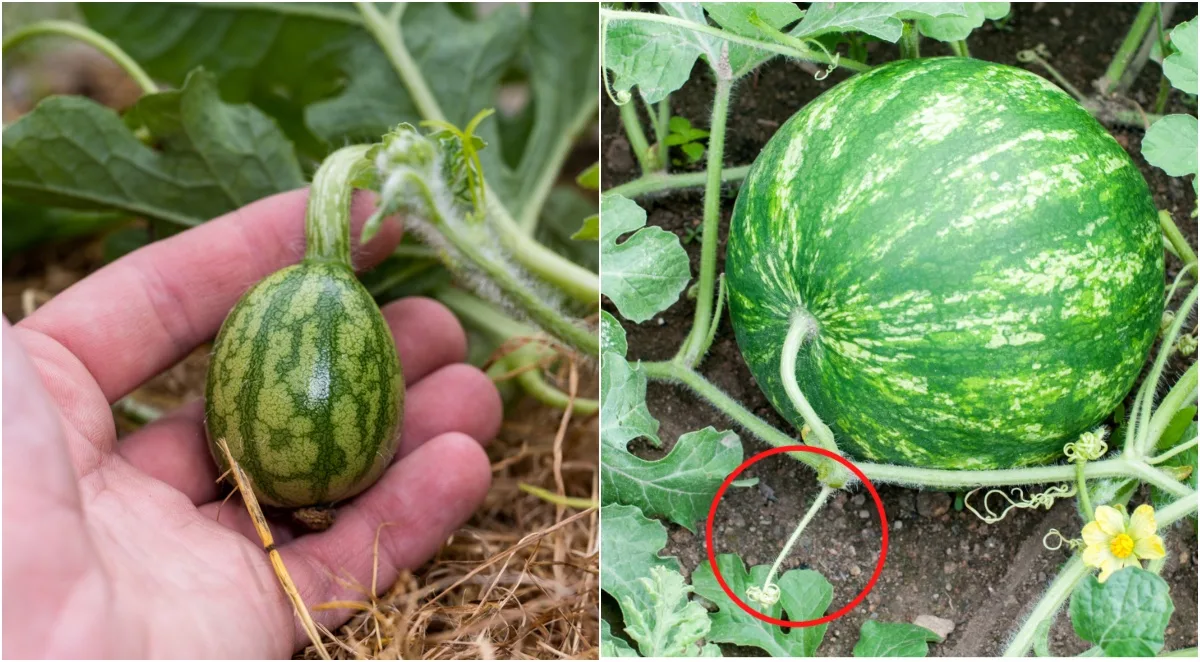
Start by testing the soil’s pH level and nutrient content. Watermelons thrive in slightly acidic soil with a pH level between 6.0 and 6.5. You can use a soil testing kit or send a sample to a local agricultural extension service for analysis.
2. Till the soil
Next, till the soil to a depth of at least 8-10 inches. This process helps loosen compacted soil, improves drainage, and allows the watermelon roots to spread easily. Remove any large rocks, roots, or debris that may hinder the growth of the plants.
3. Add organic matter
Incorporate organic matter, such as compost or well-rotted manure, into the soil. This will enhance its fertility, moisture-retention capabilities, and overall structure. Spread a layer of organic matter over the tilled soil and use a garden fork or tiller to work it into the top few inches.
4. Provide proper drainage
Ensure that your planting site has good drainage. Watermelons are susceptible to root rot when the soil becomes waterlogged. If your soil is heavy clay or poorly draining, consider creating raised beds or mounds to improve drainage.
5. Adjust soil nutrients
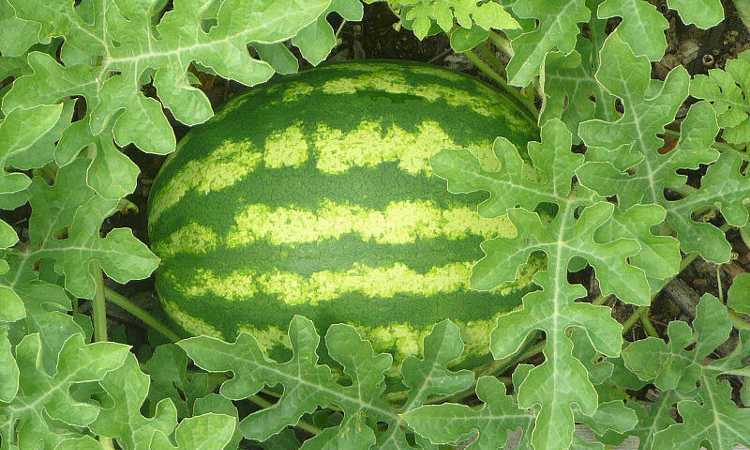
Based on the results of your soil test, adjust the nutrient levels as needed. Watermelons require adequate levels of nutrients like nitrogen, phosphorus, and potassium for healthy growth. Follow the recommendations from your soil test results or consult a local expert for guidance on appropriate fertilization.
6. Mulch the soil
After planting the watermelon seeds, apply a layer of organic mulch, such as straw or shredded leaves, around the plants. Mulching helps conserve soil moisture, suppress weed growth, and maintain a more stable soil temperature.
By preparing the soil properly before planting, you can create optimal conditions for watermelon growth and maximize your chances of a successful harvest.
Select the Right Watermelon Variety
Choosing the right watermelon variety is crucial for successful cultivation. There are several factors to consider when selecting a watermelon variety:
- Climate and Growing Season: Different varieties have different requirements for temperature and growing season length. Make sure to choose a variety that is well-suited to your specific climate conditions.
- Size: Watermelons come in different sizes, ranging from small to giant. Consider your space limitations and the intended use of the watermelons when selecting a variety.
- Seedless or Seeded: Decide whether you prefer seedless or seeded watermelons. Seedless varieties are often more convenient for consumption, while seeded varieties can be used for seed-saving or traditional cultivation.
- Flavor and Texture: Watermelons vary in flavor and texture. Some varieties are sweeter, while others have a more subtle taste. Consider your personal preferences and intended use when choosing a variety.
- Disease Resistance: Check if the variety you are considering has any resistance to common diseases that may be present in your area. Selecting a disease-resistant variety can help prevent potential problems and increase the chances of a successful harvest.
Once you have considered these factors, research different watermelon varieties and read reviews from other growers to determine which ones are best suited to your needs and growing conditions. This careful selection process will help ensure that you choose the right watermelon variety and maximize your chances of a bountiful harvest.
Plant Watermelon Seeds at the Right Time
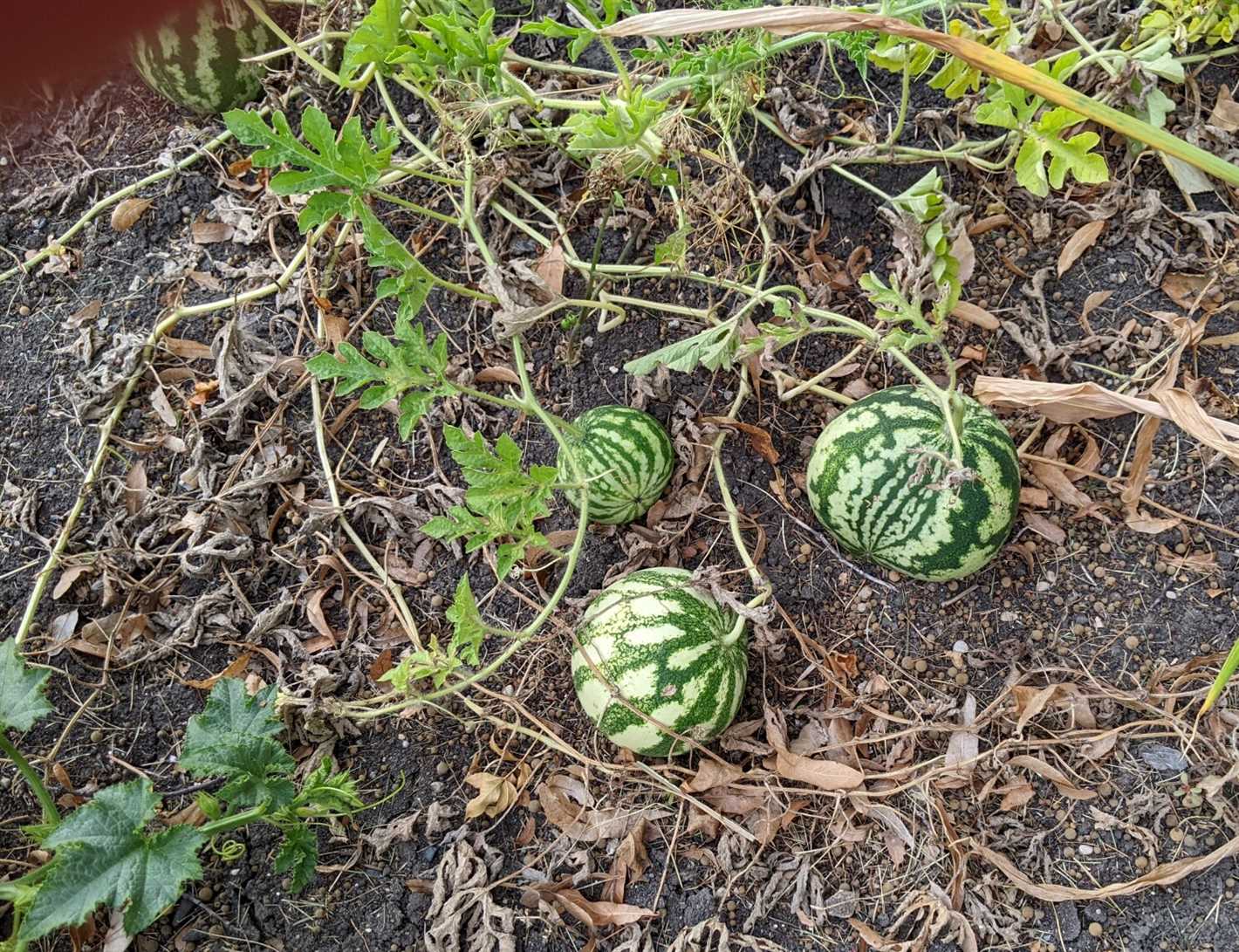
When it comes to planting watermelon seeds, timing is crucial. The success of your watermelon plants depends on planting them at the right time, ensuring optimal growth and fruit development. Here are some key points to keep in mind:
- Consider the local climate: Watermelons thrive in warm weather, so it’s important to wait until the soil temperature reaches a consistent 70°F (21°C) or higher before planting. Cooler temperatures can slow down germination and overall growth.
- Start indoors or sow directly: Depending on your region and climate, you can either start the watermelon seeds indoors in biodegradable pots a few weeks before the last frost date or sow them directly into the garden soil. Starting indoors allows you to get a head start on the growing season.
- Check the frost-free date: Watermelon plants are frost-sensitive, and frost can easily kill or damage them. Make sure to check your local frost-free date and wait until after it has passed before planting your seeds or seedlings in the garden.
- Soak seeds before planting: Watermelon seeds have a hard outer coating that can slow down germination. To speed up the process, soak the seeds in lukewarm water for 24 hours before planting. This will help soften the seed coat and improve germination rates.
- Choose the right location: Watermelon plants require full sun and well-draining soil. Find a spot in your garden that receives at least 6-8 hours of direct sunlight per day. Additionally, ensure that the soil is loose, rich in organic matter, and has good drainage to prevent waterlogged roots.
- Space out your plants: Watermelon vines can spread out and take up a lot of space. Make sure to leave enough room between each plant, typically about 3-4 feet apart, to allow for proper growth and airflow. Crowded plants can lead to disease and poor fruit development.
By following these guidelines and planting your watermelon seeds at the right time, you can provide the best conditions for your plants to thrive and produce delicious, juicy melons.
Watermelon Planting Tips for Proper Watering
- Choose the Right Time: Watermelons need a lot of water, so it’s best to plant them during a time when rain is more frequent. This can help reduce the amount of water you need to provide.
- Water Deeply: When watering watermelon plants, it’s important to provide deep irrigation. This means watering the plants deeply, reaching the roots. Shallow watering can result in shallow root growth and weaker plants.
- Avoid Overwatering: While watermelons need a lot of water, it’s important not to overwater them. Overwatering can lead to root rot and other problems. It’s best to provide enough water to keep the soil evenly moist, but not waterlogged.
- Water in the Morning: Watering watermelon plants in the morning allows the leaves to dry off during the day. This can help prevent the growth of fungal diseases and keep your plants healthy.
- Use Mulch: Applying a layer of mulch around watermelon plants can help conserve moisture in the soil and reduce the need for frequent watering. Mulch also helps regulate soil temperature and suppresses weed growth.
- Monitor Soil Moisture: Regularly check the moisture level of the soil around your watermelon plants. Stick your finger into the soil to a depth of about 1 inch. If it feels dry at that depth, it’s time to water. If it feels moist, you can hold off on watering for a bit longer.
- Consider Drip Irrigation: Drip irrigation is an efficient way to water watermelon plants. It allows water to be delivered directly to the root zone, reducing evaporation and minimizing water waste.
- Watermelon Hydration Test: If you’re not sure if your watermelon plants need water, you can perform a hydration test. Gently squeeze the soil near the base of a plant. If the soil feels dry and crumbly, it’s time to water. If it feels moist and holds together, you can wait a little longer before watering.
- Monitor Weather Conditions: Pay attention to the weather forecast and adjust your watering schedule accordingly. If rain is expected in the coming days, you may not need to water as frequently.
Prune the Watermelon Plants for Better Growth
Pruning is an essential task when it comes to growing watermelon plants. It helps promote better growth and improves the overall health of the plant. Here are some tips to follow when pruning your watermelon plants:
1. Remove the Suckers
Suckers are the small branches that grow from the main stem of the plant. These suckers compete for nutrients and can hinder the growth of the main vines. It is important to remove them regularly to allow the main vines to thrive.
2. Trim the Leaves
Trimming some of the leaves on the watermelon plants can help improve air circulation and reduce the risk of disease. Focus on removing any damaged or yellow leaves, as well as those that are shading the fruits. This will help the plants receive sufficient sunlight and energy for fruit development.
3. Prune the Lateral Vines

Lateral vines are the branches that grow from the main vines. While they can produce fruit, they can also divert energy away from the main fruit-bearing vines. Pruning the lateral vines helps redirect energy to the main vines, resulting in larger and more flavorful watermelons.
4. Support the Growing Fruits
As the watermelons grow, they can become heavy and put stress on the main vines. It is important to provide support for the growing fruits to prevent them from breaking off or damaging the plant. You can use slings, netting, or even pantyhose to support the watermelons and reduce stress on the vines.
5. Time Your Pruning
Pruning should be done throughout the growing season, but it is important to time it right. Avoid pruning during periods of stress, such as extreme heat or drought, as this can further stress the plants. Aim to prune when the plants are actively growing and have enough energy reserves to recover from the pruning.
By following these pruning tips, you can ensure better growth and healthier watermelon plants. Remember to always use clean and sharp pruning tools to avoid spreading diseases between plants.
Protect Your Watermelon Plants from Pests and Diseases
Watermelon plants can be vulnerable to a variety of pests and diseases, which can greatly affect their health and yield. Here are some tips to protect your watermelon plants from these common issues:
1. Aphids
Aphids are small, soft-bodied insects that can suck the sap from watermelon plants, causing stunted growth and curled leaves. To prevent aphids, regularly inspect your plants and remove any infested leaves or stems. Additionally, you can introduce beneficial insects like ladybugs or lacewings, which prey on aphids.
2. Spider Mites
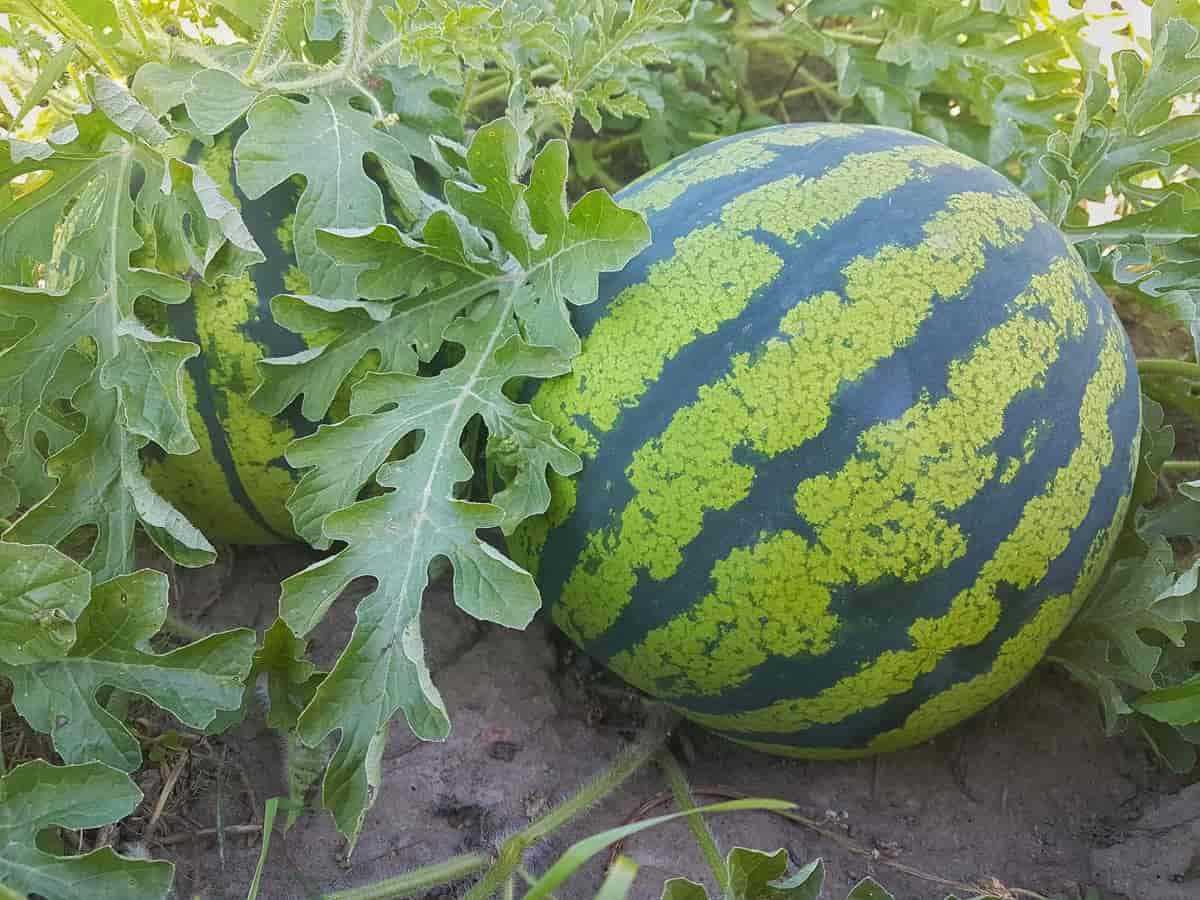
Spider mites are tiny pests that feed on the leaves of watermelon plants, resulting in yellowing and speckled foliage. To control spider mites, regularly spray your plants with a strong jet of water to dislodge them. You can also use insecticidal soap or neem oil to treat severe infestations.
3. Fusarium Wilt
Fusarium wilt is a fungal disease that affects watermelon plants, causing wilting, yellowing leaves, and ultimately plant death. To prevent fusarium wilt, choose resistant watermelon varieties if possible. Rotate your watermelon crop with other plants, as the fungus can persist in the soil. Additionally, avoid overwatering, as damp conditions can promote the growth of the fungus.
4. Powdery Mildew
Powdery mildew is a common fungal disease that appears as a white, powdery coating on the leaves of watermelon plants. To prevent powdery mildew, ensure good air circulation around your plants by spacing them properly. Avoid overhead watering and water the plants at the base to keep the leaves dry. If necessary, use a fungicide labeled for powdery mildew.
5. Squash Vine Borers
Squash vine borers are destructive pests that attack watermelon plants, tunneling into the stems and causing wilting and plant death. To protect your plants from squash vine borers, cover the base of the stems with a physical barrier such as aluminum foil or nylon stockings. This will prevent the adult moths from laying their eggs at the base of the plants.
6. Crop Rotation
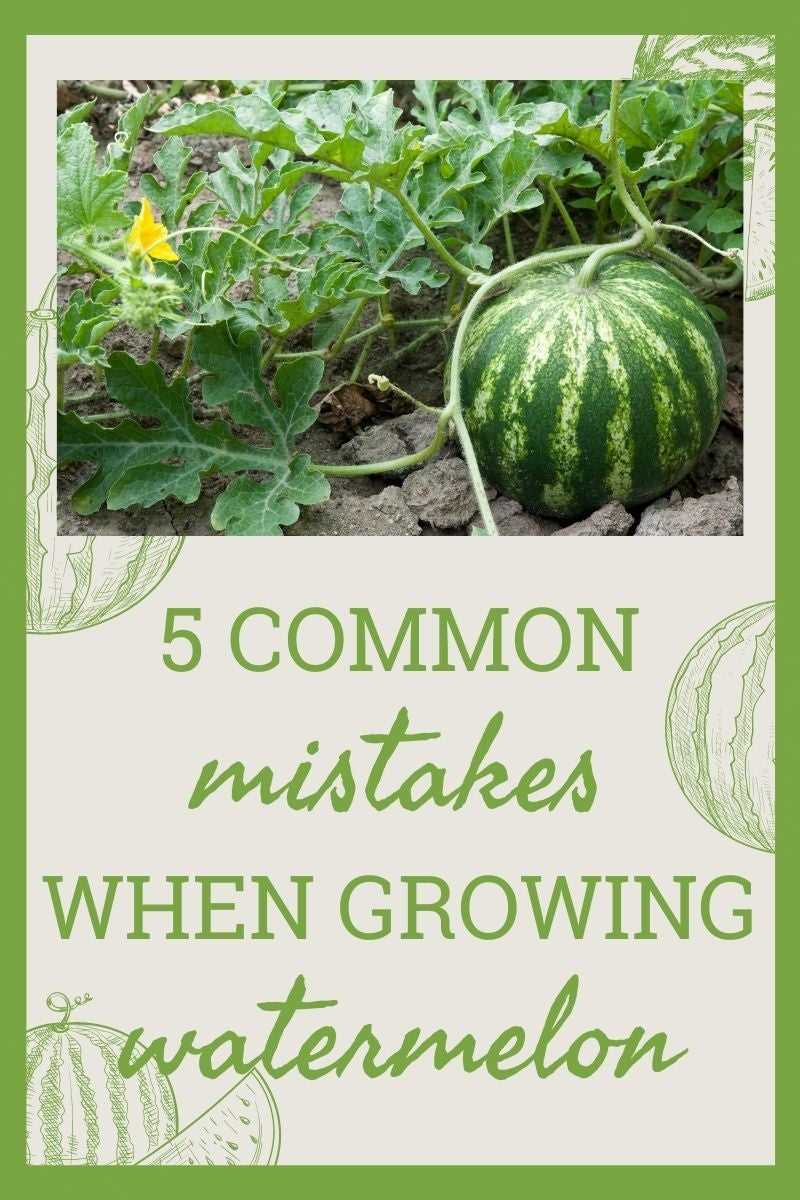
To prevent the buildup of pests and diseases, it is important to practice crop rotation in your garden. Avoid planting watermelon or any other cucurbit plants in the same spot for consecutive years. Rotating your crops helps to disrupt the life cycle of pests and diseases, reducing the risk of infestation.
7. Regular Inspections
To catch pests and diseases early on, make it a habit to regularly inspect your watermelon plants. Look for any signs of damage, such as chewed leaves, wilting, or discoloration. Early detection allows you to take prompt action, minimizing the impact on your plants.
By following these tips, you can effectively protect your watermelon plants from pests and diseases, ensuring a healthy and bountiful harvest.
Harvesting and Preserving Watermelons
Harvesting watermelons at the right time is crucial to ensure they are at their peak freshness and flavor. Here are some tips on how to properly harvest and preserve watermelons:
1. Determine the Ripeness
Watermelons are ready to be harvested when they exhibit certain signs of ripeness:
- The underside of the watermelon should have a creamy yellow or light orange color.
- The skin should be firm and not easily punctured with your fingernail.
- The tendril on the stem nearest the fruit should be dry and brown.
2. Harvesting the Watermelon
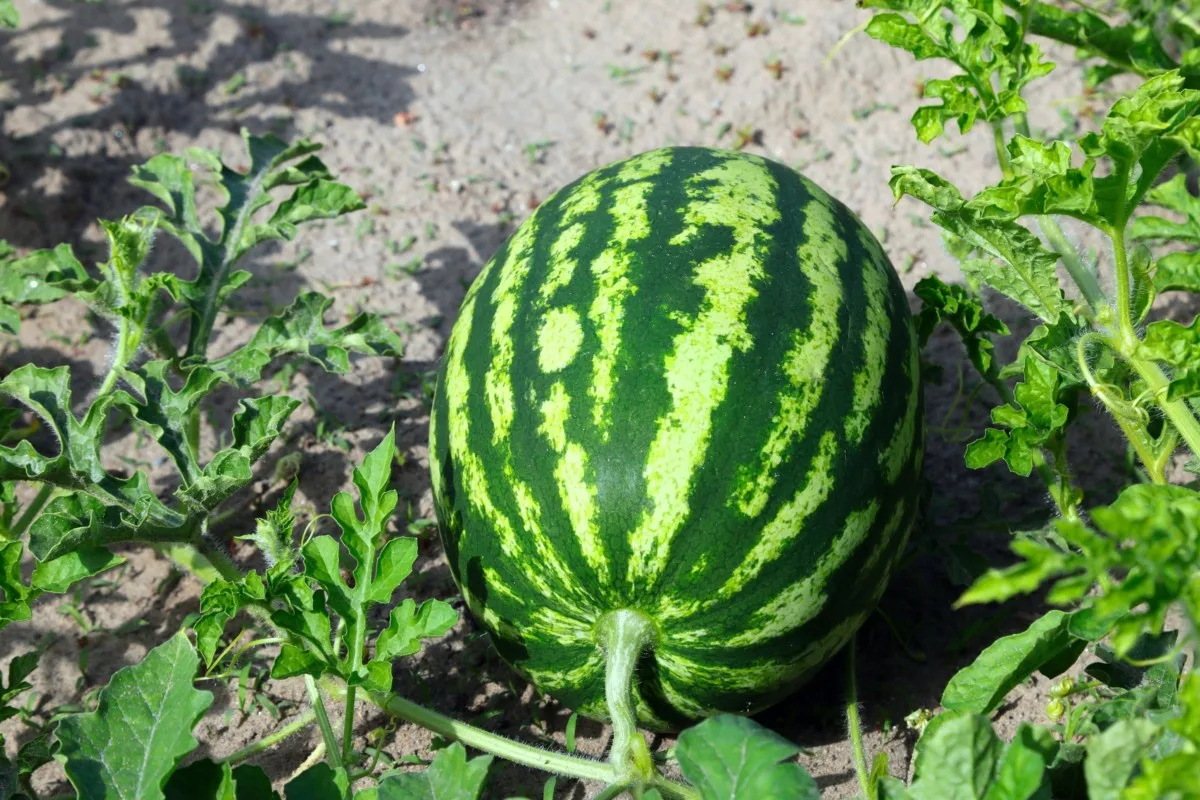
To harvest a watermelon, follow these simple steps:
- Cut the stem about an inch above the fruit using a sharp knife or pruning shears.
- Support the bottom of the watermelon with your hand to prevent it from dropping and causing cracks or bruising.
- Gently lift the watermelon and place it in a padded container or basket.
3. Storing and Preserving
Proper storage is essential to maintain the freshness and taste of watermelons:
| Method | Storage Duration |
|---|---|
| Refrigerator | Up to 2 weeks |
| Freezer (cut into cubes) | Up to 3 months |
| Canning or Preserving | Several months to 1 year |
To store watermelons in the refrigerator, wrap the whole watermelon in plastic wrap or place cut watermelon in an airtight container. Frozen watermelon cubes can be used in smoothies or as a refreshing snack. Canning or preserving watermelon allows you to enjoy the sweetness of this fruit throughout the year.
By following these harvesting and preserving tips, you can make the most of your watermelon harvest and enjoy the delicious taste of watermelon all year round!
“Question-Answer”
When is the best time to plant watermelons?
The best time to plant watermelons is in late spring or early summer when the soil is warm and the danger of frost has passed. This typically occurs when the average daily temperature is consistently above 60°F (15°C).
Can watermelon plants tolerate drought?
Watermelon plants are not very drought-tolerant. They require consistent watering throughout their growing season to ensure proper growth and development. Lack of water can cause the plants to dry up and the fruit to become small and lack flavor.
How often should I water my watermelon plants?
Watermelon plants require regular watering. It is best to water them deeply once or twice a week rather than shallowly every day. The goal is to keep the soil evenly moist, but not waterlogged. Be sure to adjust the frequency of watering based on weather conditions and the stage of plant growth.
Should I water the leaves of watermelon plants?
It is important to avoid wetting the leaves of watermelon plants when watering. Wet leaves can lead to various diseases, such as powdery mildew. Instead, direct the water towards the base of the plant, near the root zone.
How can I prevent my watermelon plants from drying up?
To prevent your watermelon plants from drying up, ensure they receive adequate water by following a consistent watering schedule. Mulching around the plants can also help to retain moisture in the soil. Additionally, providing some shade for the plants during the hottest part of the day can reduce water evaporation and stress on the plants.
What nutrients do watermelon plants need?
Watermelon plants require a balanced supply of nutrients for optimal growth. They particularly need high levels of nitrogen, phosphorus, and potassium. It is important to amend the soil with organic matter and apply a balanced fertilizer, following the manufacturer’s instructions, to provide these essential nutrients.
Can I grow watermelon plants in containers?
Yes, you can grow watermelon plants in containers as long as the containers are large enough to accommodate their extensive root system. Choose a dwarf or compact variety specifically bred for container gardening. Provide proper drainage and ensure the container is placed in a sunny location.







